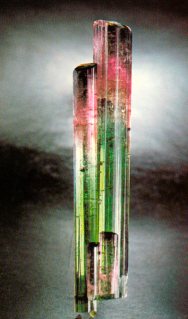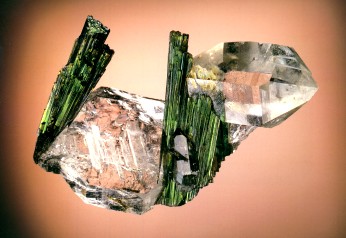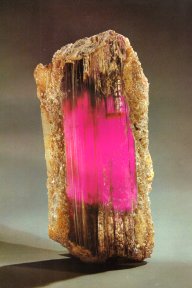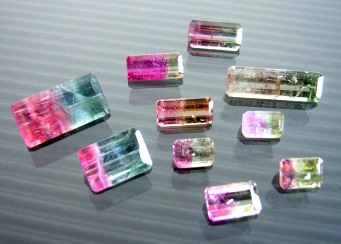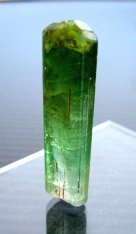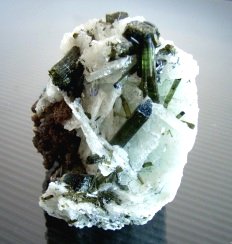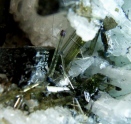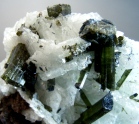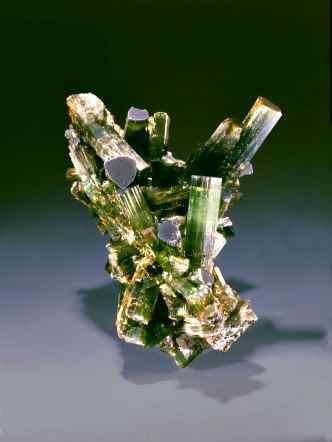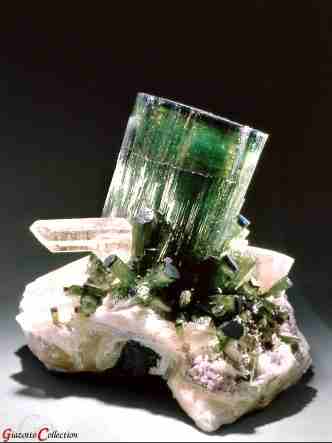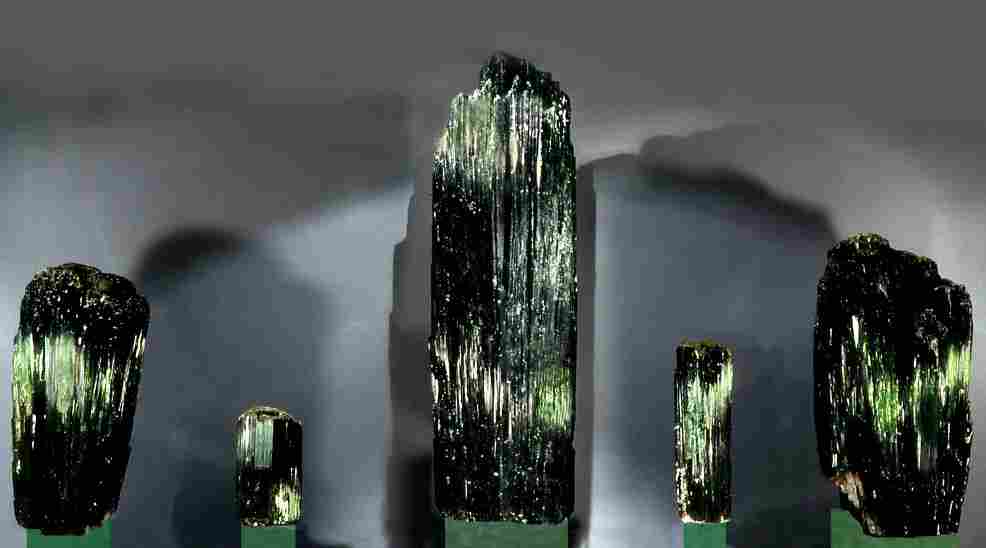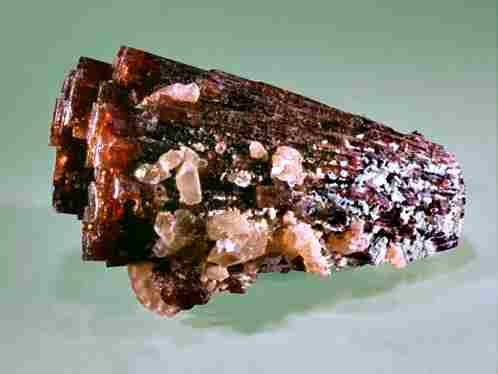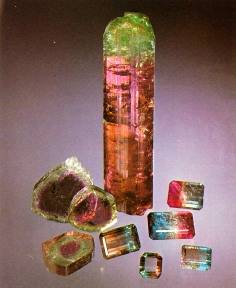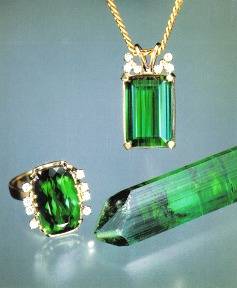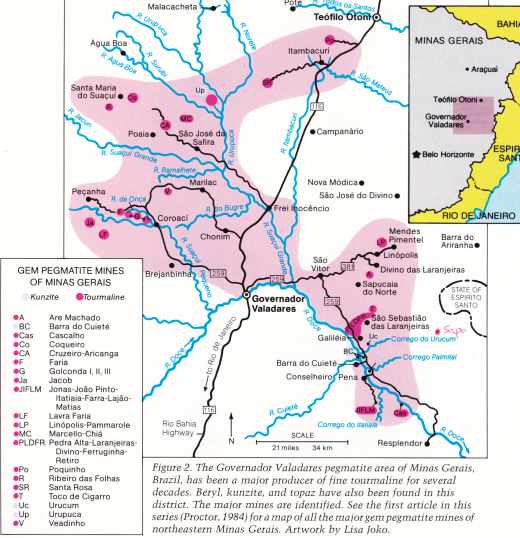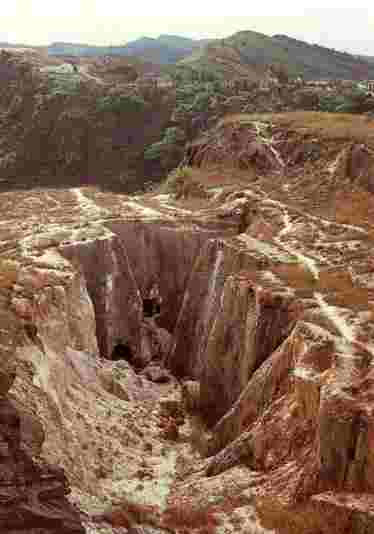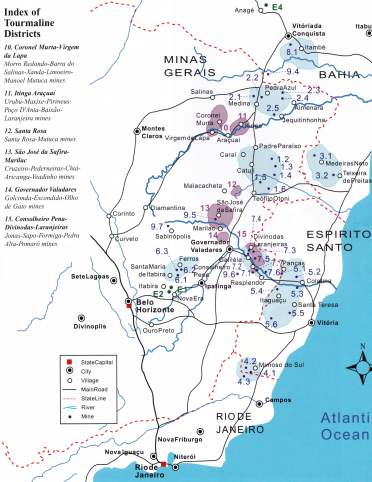 |
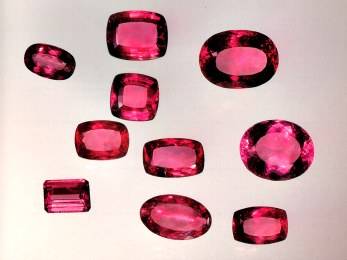 |
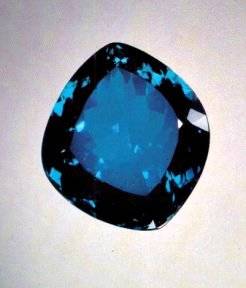 |
| Chromolite
2-7ct Poquim Mine/Cruzeiro Mine |
Rubellite 8-41ct Jonas Mine | Indigolite
52ct Manuel Mutuca Mine |
ブラジルは世界で有数の宝石産出国です。多くは主にペグマタイト鉱床に産するアクアマリン、トパーズ、クンツアイト、アレクサンドライト等々、美しい色合いの宝石で、その種類と品質の高さと生産量とで圧倒的な地位にあります。
数ある中で、しかしブラジルの代表的な宝石と挙げるなら、第一にあげられるのがトルマリンです。
ブラジルのトルマリンは他を圧倒する多彩な色合いと自然の驚異ともいえる大きく見事な結晶の数々は世界の博物館や個人のコレクションの中心的な存在となっています。
アメリカのサン・ディエゴやアフガニスタンからも素晴らしく美しい結晶が採掘されますが、多くは透明度に欠けるため宝飾品としてカットされることはほんの一部です。
宝石用のトルマリンのルースの大半はブラジル産です。しかしパライバ産は例外として、それ以外のブラジルのトルマリンのルースの大半は、産出した鉱山名が明らかにされることも、さらに産出国さえ明記されずに、単にトルマリンとして扱われる例が大半です。
ルビーならビルマのモゴク、サファイアはカシミール、エメラルドはコロンビアのムソーとそれぞれの特産地の際立った美しさが高く評価されるのと比較すると、最上級のトルマリンがこうした代表的な宝石と遜色のない美しさを見せるにもかかわらず、まるでホームレスのごとき扱いしか受けないのは余りにも不当なことです。
トルマリンが正しく認識されるためにも、まずその素性を明らかにして、由緒正しい出であることを明らかにする必要があります。
と考えて、主要な鉱山産の結晶と、そのルースがどんなものか、いざ調べてみるとなかなかまとまった資料がありません。
手持ちの結晶やルースも大半はラベルの原産地表示が標本やルースの集散地の地名になっているものが多く原産地を確定できません。
改めて主産地のブラジルでさえ、トルマリンが単なる商品として粗雑に扱われていた事をうかがわせるものです。
今や世界的にもっとも名高いのは北部パライバ州産の銅とマンガンを含み熱帯の珊瑚礁の海のような輝かしい色合いのトルマリンですが、しかし、ミナス・ジェライス州のトルマリンも美しさでは決して劣るものではありません。
今後、シリーズとして主要な鉱山のトルマリンを紹介してブラジル産のトルマリンの全貌を明らかにして行きます。
まずはクルゼイロ鉱山から。
Brazil is a leading gem producing country in the world. Particulary, varieties of colored stones from pegmatite mines, such as aquamarin, tourmaline, topaz, kunzite, alexandrite etc. dominate the world gem stone market both in quality and quantity.
Among all colored stones, tourmaline represents as the symbol of Brazilian gem stone for its rich color variation, and superb quality as museum piece crystals. Superb tourmaline crystals are found in pegmatite veins of San Diego, U.S.A. and Afghanistan etc., but most of them are not suitable for facetting and are not comparable to Brazilian one.
So far, the world gem tourmaline market is dominated by Brazilian origines. Despite these facts, except Paraiba origine, no careful attention has been paid for the origin of Brazilian tourmalines. Compared with respects of origins for legendary localities of representative gemstones, such as Mogok for Ruby, Muzo for Emerald and Kashmir for Sapphire, is'nt it unfair that Brazilian tourmalines did not receive the proper respects ? As hown on top photos, the best Brazilian tourmalines are as attractive as emerald, ruby and sapphire.
Now, it is time to clarify origines of representative Brazilian tourmalines before all basic informations are forgotten.
However, I found it is not such easy job. There remains very little documents nor photos of even important mines and most of facetted stones and specimens are not labeled with definitive origine but with town name of distribution.
Although Paraiba tourmaline became too famous for its bright colors like, coral sea, tourmalines from mines of Minas Gerais are
attractive enough as Paraiba one.
Series of major mines will show you the beauty of Brazilian tourmalines ;
Let's start from Cruzeiro mine.
2.ゴヴェルナドール・ヴァラダレス周辺のトルマリン鉱山
(Tourmaline Mines around Governador Valadares)
